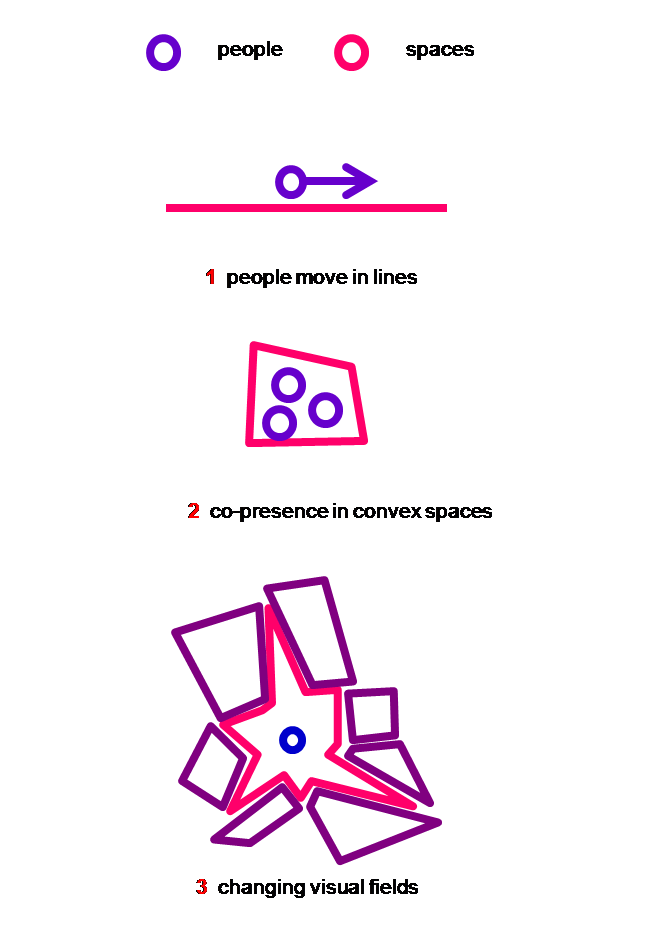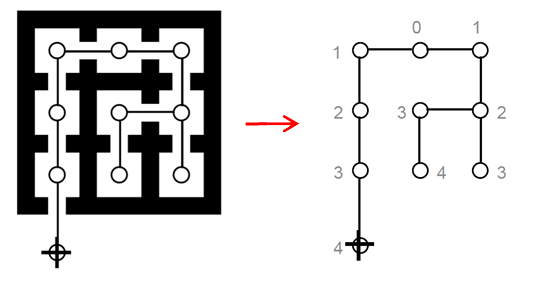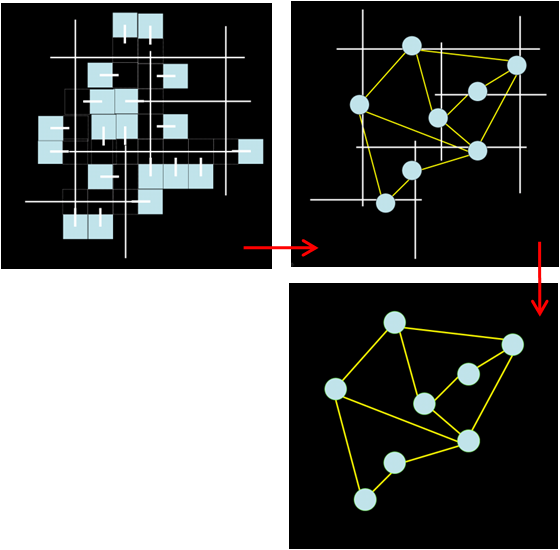How is space represented?
Space syntax has developed unique ways of representing space. Space is described in terms of discrete spatial elements that relate to human behaviour as well as the unique geometric and configurational properties of the networks created by these elements.
1. How to represent spaces in relation to the way people behave in the space?
a. People move in lines A1
People move in linear spaces such as corridors, streets, boulevards, avenues and alleys. Linear spaces and the potential of movement in these can be represented in the form of an axial line, a segmentor a road centre line.
b. Co-presence in convex spaces A2
People interact in a convex space, meaning the space in which all people can see all others.
c. Changing visual fields A3
An Isovist is a representation of everything that can be seen directly from a given point in space. When we move through the complex patterns of space in built environments, the isovist is changing and the accumulation of these isovists represents an enduring picture of the pattern of space as a whole.
2. How is space represented regarding the configurational relations?
Space is also represented as a graph in which the discrete spatial element (eg. convex space, axial line,segment, or isvoist) is denoted as a small circle, or a node, and its relationship with other elements is denoted as a line, or a link which joins the circles.
The graph represents the configurational relations between those spatial elements, which can be applied to both building and urban studies.
For example, the spatial layout of a hypothetical house (see figure B) is represented as a graph, where each room is denoted as a circle and the access relations between the rooms as links.
Another example is a hypothetical settlement (see figure C ).The street lines are represented as circles, and the street intersections as links; this is in contrast to the conventional representation of a street network in transport modelling, where the street intersections are denoted as circles and the streets as links.









